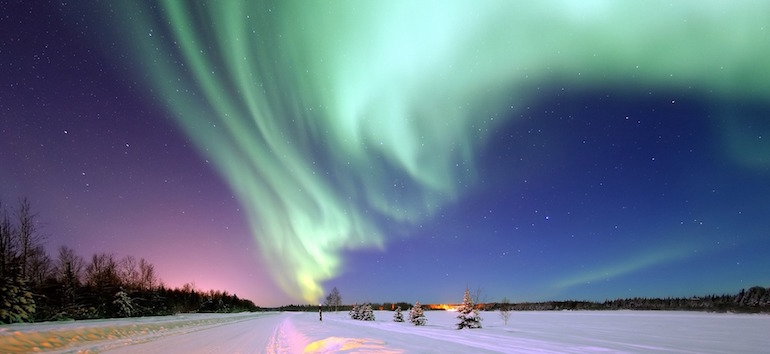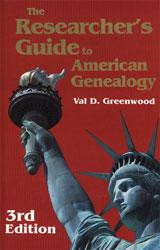Sign up for the Family Tree Newsletter! Plus, you’ll receive our 10 Essential Genealogy Research Forms PDF as a special thank you.
Get Your Free Genealogy Forms
"*" indicates required fields
Everything’s bigger in Alaska, or so it seems. The state is gigantic—nearly one-fifth the size of the other 49 states combined—and it’s home to Mount Denali (aka Mount McKinley), the highest point in North America. Practically the only thing that’s not big in Alaska is its population: It’s the third least-populated state, with a mere 739,795 residents. More than half of them live in the Anchorage area.
Alaska became a US territory in 1912 and joined the Union in 1959, but its heritage stretches back thousands of years, when Asians from Siberia crossed the Bering Strait on the Beringia “land bridge.” Their descendants include today’s Athabascan, Haida, Tlingit, Aleut and Inuit (Eskimo) peoples, who make up a seventh of Alaska’s population. The remainder of the population claims a variety of heritages, particularly German, Irish, English, Norwegian, Russian and Asian.
This young state with a deep history offers many gems for genealogists. The sooner you get started, the faster you’ll reap big research rewards.
Finding early Alaskans
Those researching American Indian heritage in Alaska should consult Bureau of Indian Affairs records at the National Archives in Seattle. Visitors to the Family history Library in Salt Lake City can view the records on microfilm. This includes records of boarding schools, such as Mount Edgcumbe and the Wrangell Institute.
Russian fur traders settled on Kodiak Island in 1784 and had landed in Sitka by 1799. Russia governed the area until the United States purchased it in 1867 for $7.2 million. The acquisition, engineered by Secretary of State William Seward, was mocked by critics as “Seward’s Folly.” In 1896, fortune seekers in Canada’s Klondike Gold Rush traveled through Alaska; later strikes in Nome (1898) and Fairbanks (1902) spurred the state’s own gold rush.
Opportunity continued to inspire northward migration: During the Great Depression, the US government relocated 203 Midwestern farming families to Palmer.
Alaska gained a strong armed presence in World War II, when the military population jumped from 1,000 to 35,000. That number eventually topped 100,000, and the economy flourished. Many soldiers stayed after the war. The 1968 discovery of the continent’s largest oil field at Prudhoe Bay sparked a “black gold rush” that further buoyed the economy. If your ancestors were prospectors, their nomadic behavior can present a genealogical challenge. Prospectors poured in and out of mining towns, following lodes and rumors of lodes. You’ll need to follow the same lodes and rumors in the historical record to guess where your gold-mining great-grandpa may have gone next. Then sift through court records, newspaper accounts of strikes and topographical maps for mentions of his name. Learn more miner research strategies at Finding Your Gold Rush Relative.
Finding genealogical records in your ancestors’ locales can take some serious mining of your own. Alaska started out with a tribal culture that left no written records. When the Russian government took over, churches recorded residents’ information. During the state’s territorial years, the US government kept track of denizens.
Those responsibilities eventually shifted to the state, its 18 boroughs (Alaska’s version of counties), cities and native corporations. Portions of the state not covered by boroughs are divided into census areas.
That means you won’t find records at a county clerk’s office, as you would in the lower 48 states. Instead, you’ll have to learn the district-, city- or state-level office that had jurisdiction over an area at the particular time and place of interest. You can get contact information for cities and boroughs, and most court records are in the Alaska State Archives.
Census records
Alaska’s first mostly extant federal census is the 1900 count (those from 1880 and 1890 were lost). You can search censuses up through 1940 on subscription sites Ancestry, Findmypast and MyHeritage.
Alaska took territorial censuses in a variety of places and years, including Sitka in 1870 and St. George Island in 1881. These are available on microfilm at the Family History Library (FHL) and indexed in Ancestry’s Alaska, Compiled Census and Census Substitutes Index, 1870-1907. Keep the state’s terrain in mind: If your ancestor trekked to the remote bush, censustakers probably couldn’t reach him.
Vital records
Statewide birth, death and marriage registration began in 1913. Birth records are restricted for 100 years; marriage and death, for 50 years. Request copies from the Bureau of Vital Statistics (BVS). You’ll also find searchable Alaska vital records indexes on FamilySearch and Ancestry.
Churches are an important source of pre-1900 records. The Library of Congress translated and indexed Russian Orthodox parish records in the Alaskan Russian Church Archives. Microfilm copies covering 1816 to 1936 are at the FHL, Rasmuson Library in Fairbanks and BVS.
BVS also created delayed birth certificates from records of churches, including Moravian, Episcopalian, and Methodist. Follow the instructions for requesting BVS records here. BVS has records for Catholics and Presbyterians, but those churches kept their own records, so you might get around restrictions by contacting parish offices.
Newspapers
Alaska’s newspapers date to the 1860s, so you may be able to use them for tracing prospectors on the move or finding an obituary in lieu of an official death record. You can search pages from 33 digitized Alaska newspapers on subscription site GenealogyBank and several on Newspapers.com and the free ChroniclingAmerica.
Search an online index to several Juneau and Fairbanks publications as far back as 1901. Ancestry also has indexes with more than 150,000 names mentioned in Alaska newspapers, and the FHL has a microfiche index to Anchorage obituaries from 1915 to 1980. The Anchorage Genealogical Society publishes birth and death information from early newspapers in its quarterly newsletters.
Other useful records
These records also can pay big in your ancestor search:
Land records
The US opened its Sitka land office in 1885. Search the Bureau of Land Management site for land patents. Land entry case files containing patent applications are with the National Archives. Visit Alaska’s BLM field offices to see tract books and township plats; find mining claim maps at the state archives; and look for even more maps, plats and charts at the FHL and the Rasmuson Library.
Probate records
District courts handled probate matters in Alaska from 1885-1960. (Today, probate is handled through the state court system.) These records are now at the state archives. Search a surname index, which includes the district in which cases were administered (click on For Researchers, then Probate Index).
Military records
Alaskans’ draft registration cards are on Ancestry, with a free index and images on FamilySearch. Check Army enlistment registers for 1798 to 1914 on FHL microfilm. Use the Nationwide Gravesite Locator to search for data on military personnel and their families buried in Alaska’s national cemeteries at Fort Richardson and Sitka.
State archives
Holdings at Alaska’s repositories are as vast as the state itself. Besides maps, the Rasmuson Library has photos, manuscripts and an index to 8,000 members of the Pioneers of Alaska. Most materials date from the 1880s and later, but some cover earlier times. The state archives holds records of pioneer (nursing) home residents, veterans and teachers. Indian documents are at the Consortium Library; its microfilmed Alaska Mission Collection (also on FHL microfilm) features missionaries’ diaries, censuses and church records. With all these resources, your Last Frontier research is headed for big success.
For more information on Alaska research, head over to the Fast Facts and Key Resources!
This new 3rd edition of The Researcher’s Guide to American Genealogy includes a new chapter on the property rights of women, a revised chapter on the evaluation of genealogical evidence, and updated information on the 1920 census. Arguably the best book ever written on American genealogy, it is the text of choice in colleges and universities or wherever courses in American genealogy are taught.



